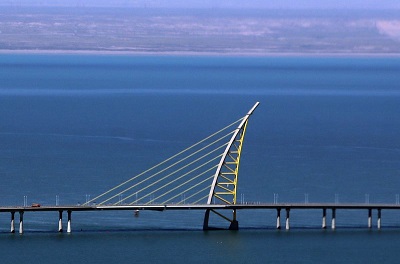Kuwait's only free trade zone was established in 1999, providing conventional free zone advantages, including exemption from import duties, foreign corporate income tax, and the issuance of service licenses without requiring a local sponsor. Situated in Shuwaikh, just west of Kuwait City, the zone includes Shuwaikh port, a power station, and a desalination plant.

Based on the 2013 Index of Economic Freedom by the US think tank The Heritage Foundation, Kuwait is considered the 66th most open economy globally. In the Middle East and North Africa region, it holds the seventh position out of the 15 countries listed. With an estimated population of 3.9 million, Kuwait's gross domestic product (GDP) is reported at $173.4 billion. According to the International Monetary Fund (IMF) in Washington, the GDP is experiencing a growth rate of 7 percent annually. Additionally, the United Nations Conference on Trade and Development (UNCTAD) records foreign direct investment (FDI) at $1.85 billion in 2012.
While oil production remains a significant force in the economy, with Kuwait overseeing around 9 percent of global oil supplies, efforts are underway to reduce dependence on hydrocarbon revenue. In 2010, the government introduced a $108 billion economic development plan designed to diversify the economy, attract increased foreign direct investment (FDI), and strengthen the private sector. This four-year strategy was part of a series of six consecutive initiatives launched to support Kuwait's goal of transforming into a regional finance and trade hub by 2035.
The vision for 2035 focuses on five main areas: the economy, people and population, the political system, the cultural environment, and international positioning. The goals include:
- Streamline bureaucratic processes and simplify the requirements for initiating and running a business
- Enhance access to land through the establishment of a centralized land authority
- Foster fair market opportunities by implementing an anti-trust law
- Ensure a sustainable fiscal position by curbing the rapid growth of public sector employment and salaries
- Expand and transform the electricity sector while diversifying the non-oil energy sector
- Upgrade infrastructure, including the construction of a multimodal logistics hub
- Establish a specialized financial center with a focus on wealth management and capital markets
- Transform the dynamics of the labor market by tightening working conditions in the private sector
- Improve the education and healthcare systems
- Promote environmentally friendly initiatives
- Cultivate the arts and culture sector
As reported by the Central Bank of Kuwait, there was a 21.5 percent growth in state revenue from 2010 to 2011, with oil accounting for 92.7 percent of this increase. Looking ahead to sector development, it is anticipated that the residential and investment property markets will experience a growth ranging from 10 to 15 percent, driven by recovery from the global economic crisis of 2008.
The government is fostering economic growth through a $108 billion investment from 2010 to 2014. In 2012, Kuwait attracted foreign direct investment amounting to $1.85 billion. The country's revenue experienced a growth of 21.5 percent from 2010 to 2011.
The exclusive free zone in Kuwait is located at Shuwaikh port, which serves as the primary commercial shipping hub in the country. The port features 21 berths with depths ranging from 6.7 to 10 meters. Initially established in 1999 and managed by the private sector National Real Estate Company until 2007, the operational control of the free zone was then assumed by the Kuwait Ports Authority.
Facilities:
- Rental options include warehouses, office units, and land for development.
Benefits:
- Enjoy exemptions from corporate and personal income taxes.
- No restrictions on foreign exchange.
- Full ownership rights (100 percent) permitted.
Industries:
- Import and export
Services
- Packing, repacking, and assembly
Updated on: Thursday, January 4th, 2024